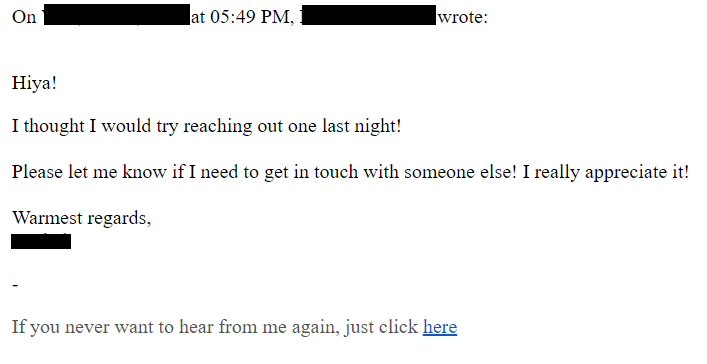Master written communication with these 7 easy tips
Georgina Guthrie
March 17, 2021
When British retailer Marks & Spencer advertised one of its chocolate puddings as “a melt in the middle, Belgian chocolate pudding served with extra thick Channel Island cream,” it saw sales rocket by 3,500%. And when EA Games wrote a dry PR-style response to Redditors complaining about the price of one of its new releases, it went on to become the most downvoted comment in Reddit history.
Long story short: Words matter. Learning how to use them effectively is a vital skill for business and for life.
In this article, we’re going to take a deep dive into the world of effective written communication — including why it’s important and how to master it.
What is written communication?
No prizes for guessing this one! It’s anything that’s written down — from road signs to novels, graffiti to passive-aggressive Post-It notes. In the business world, you’ll encounter all kinds of written communication:
- Emails and chat app messages
- Newsletters
- Meeting minutes
- Memos and wall notices
- Post-It notes (you get the idea).
Why is written communication important?
Whether you’re writing a speech or firing off a quick chat app message, knowing what you want to say and how you should say it is important. Not only does effective writing have the potential to create a connection with your audience — it’s also on the record, which means you’ll need to consider not just the initial impact, but the lasting one, too.
The better you are with words, the more likely you are to help the reader understand you. But how do you go from writing messages that are just a bit ‘meh’ to finely crafted masterpieces? Read on.
7 ways to make your writing more persuasive
1. Know what it is you want
If you don’t really know what you’re getting at, there’s no way your reader will. Before you put pen to paper (or fingers to keyboard), have a good think about what it is you’re trying to achieve. Do you want a response? Action? Are you asking a question? Or are you just passing along a message? Make it absolutely clear what it is you want them to do.
There are three overarching types of written communication:
- Instructions: When giving instructions, use formatting for added clarity. Instructions usually come with steps, so using bullet points, emboldened headers, and numbering can break the information down into digestible chunks.
- Requests: When asking someone to do something — e.g., more information, a favor, or attendance — it’s best to end with a Call To Action (CTA). This is essentially an instruction telling the recipient how best to respond. It could be a casual ‘let me know what you think,’ or it could be a more formal request — like asking them to book a meeting room or speak to their manager.
- Information: When sharing information, it’s good practice to consider every recipient. For example, if you’re sending out a mass email and the group consists of experts and others who are not, tailor the message to be suitable for everyone. This could mean providing a little background information, or going back over key points from previous meetings to get everyone up to speed.
2. Stay on-topic
Where possible, keep your message to one request at a time — and stay on topic. If you pile things up or start talking about one thing and end your message focusing on another, the reader may feel overwhelmed or confused — and you won’t accomplish your goal.
3. Use the right tone
Tone can help the reader understand your message. If you’re sending a quick message to a friend, you can probably do it without too much thought (and maybe a gif or two). If you’re messaging a client or your manager, you’ll need to be more thoughtful and serious — and probably send it via email, rather than, say, chat app. Take extra time and care when composing these messages, and think carefully about which communication channel to use.
4. Keep it simple
Business buzzwords, jargon, and big words (when small ones will do) have no place… well, anywhere. The most effective messages are those written in clear, simple language everyone understands. Not only will people thank you for being straightforward — it also exudes confidence (which reflects well on you).

Low hanging fruit, touch base, thinking outside the box… just say no. (Image Source)
5. Keep it concise
When Mark Twain said, “I didn’t have time to write you a short letter, so I wrote you a long one,” he (or whoever actually said it) raises an important point about being concise in your writing: It takes time. Why? Because saying something in as few words as possible requires you to distill your point down to its essence, and that takes thought.
Here’s how to do it. Once you’ve written out your message, edit it for clarity. Think about your core point, and delete anything that isn’t relevant to it. Read it aloud to see how it sounds, and keep sentences and paragraphs short. (Nothing makes a reader groan like a long, rambling email that doesn’t actually say anything.)
6. Use the active voice (most of the time)
Active voice is more persuasive than passive. That doesn’t mean passive voice is wrong— but in most cases, aim for the active. Try these two sentence out for size:
- The employee wrote amazing emails.
- Amazing emails were written by the employee.
The first one is written in the active voice, the second is written in the passive. The top one is simpler, shorter, and it places the subject of the sentence (the employee) first. In the second one, the object (emails) and the verb (written) come before the subject, which is less direct-sounding.
Top tip: Hemmingway Editor is a handy site that picks up on things like passive voice and complex sentences. Simply copy and paste your writing into the site and review its highlighted suggestions.
7. Proofread your writing (or get someone else to do it for you)
Typos happen to the best of us, but that doesn’t mean you should let more slip in than you can help. Sloppy spelling can make you look unprofessional, so give it due care and attention — especially if the message you’re writing is important and formal. Make sure your spellcheck is switched on, and consider investing in grammar checker tools that help you with spelling, grammar, and tone. A fresh pair of eyes can help you catch errors too.

With bad grammar and no real purpose, this sender has got it SO wrong (Image Source).
The 5 Cs of effective writing
There are five important components of good written communication — and luckily, they all begin with the letter C (which makes things much easier to remember).
- Clear purpose and expression.
- Concise expression and elimination of excess words.
- Coherent, with a logical flow of ideas.
- Compelling, with a clear purpose
- Correct grammar and spelling.
Bonus two
- Compassionate — think about how your message will land
- Curious — try to find out what the other person needs
Final thoughts
Knowing how to write persuasively is a skill for both the workplace and for life. There’s no great secret to it, and you don’t need to be a pro writer to do it well. Simply follow the tips above, and you’ll see a big improvement in both your messages and the responses they get. Whether you’re writing a contract or talking about lunch via your team’s chat app, just remember to keep it simple, choose your channel carefully, and be direct.


